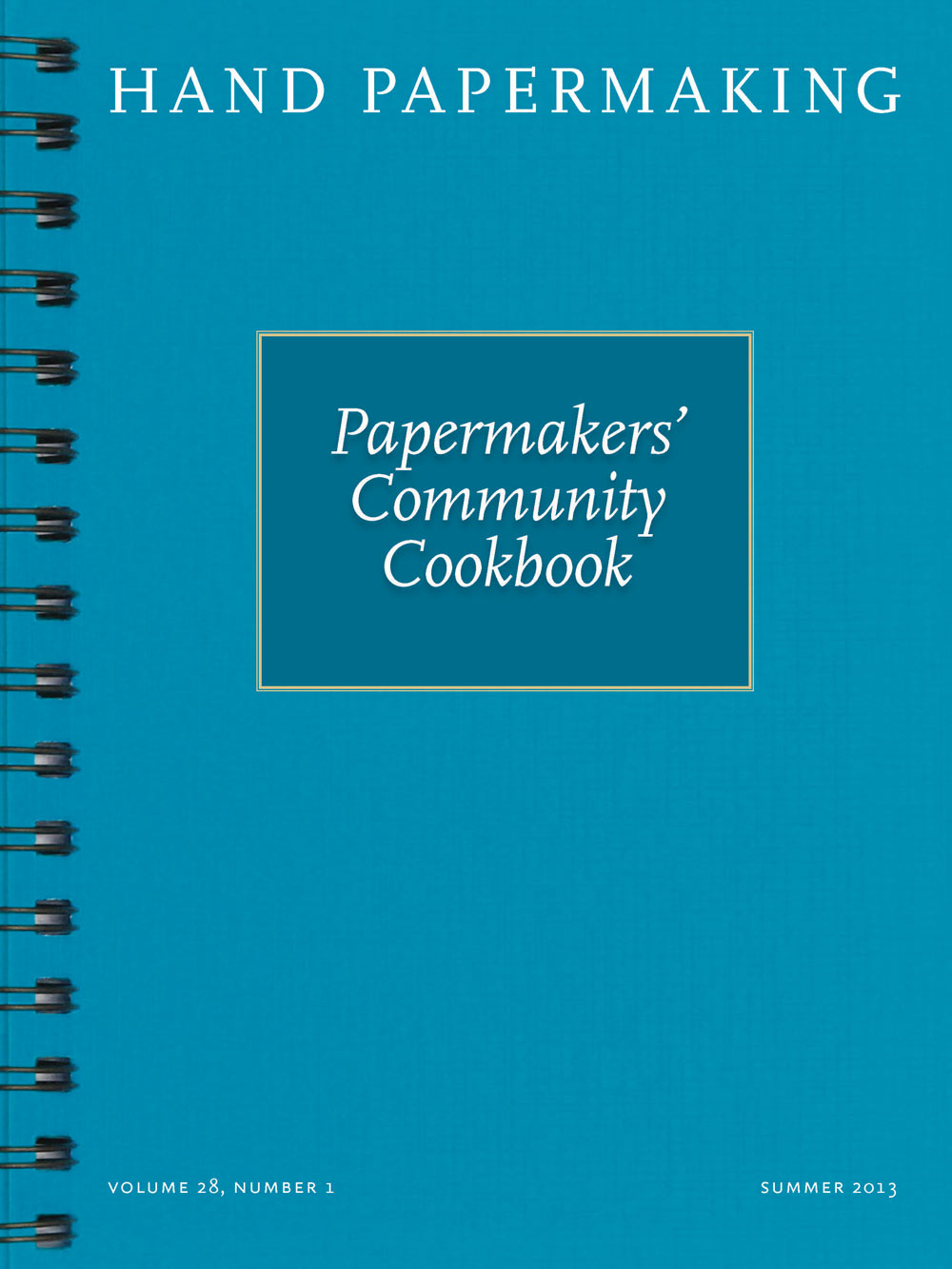ith seven children she became an efficiency expert. She found simple ways to do everything, including how to avoid cleaning paint brushes: wrap them in plastic and toss them in the freezer. Great for brushes, not so great for five, ten, twenty gallons of leftover pulp. My freezer is already chock-full with brushes from forgotten projects, sigh. Alexandra Soteriou told me that Douglass Howell never covered up his buckets of pulp. Since fibers settle toward the bottom of the container, every few days Howell poured off the foul top water and added fresh, clean water. In an active mill that is a good solution. It does not work if you aren't sure when or if you are going to finish the bucket of fiber. Alexandra also told me the following: "When we ran a beater load of raw flax we would drain off the brown beater juice and pour it down the hill behind the house where it ran into a large dead tree. After countless times pouring the nutritious ‘flax juice' the tree actually began to grow leaves again!" I imagine he poured the funky water from his holding buckets toward that same tree. If you are not able to freeze or exchange the water, then you must remove the water and dry the fibers. I tried a variety of techniques to extract the water, then asked myself: what would my mother do? I looked past the freezer toward the washing machine and dryer. Forget about the dryer. Although that seems like a ready solution, the lint trap can't handle the volume and that was just the beginning of that catastrophe. Through trial and error this is what I have been doing with excess pulp for more than thirty years: forming "ingots." I use plastic window screening material to strain excess water from five gallons of slurry. I place the drained pulp into a mesh laundry bag, and balance four bags inside my washing machine. I run it twice on the spin cycle to extract as much water as possible. I unload the loaflike ingots and finish their drying with fans. They are set aside for future papermaking. When I am ready to use the ingots, I simply saturate it with water and hydrate it in the beater. Just remember, don't forget to cancel the rinse cycle. I did that once, what a mess! Buckets filled with dried ingots from past and future production. The black ingots remain from irregularly shaped paper for a series of woodcuts by artist Jean Gumpper. Photo by the author, 2012.






